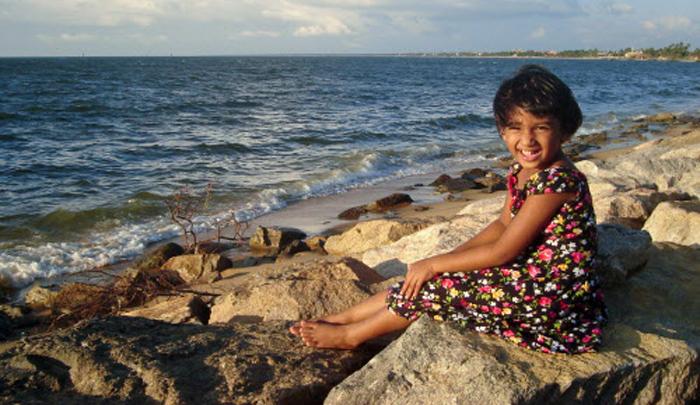
Aceh, INDONESIA (December 22, 2014) — Ten years ago the world faced one of the worst natural disasters in history when a tsunami devastated Indian Ocean coastlines, killing almost 230,000 people. But a wave of generosity from people around the world has helped rebuild the region, World Vision said.
On the morning of December 26, 2004, a massive undersea earthquake measuring 9.1 on the Richter scale triggered a series of tsunamis that charged across the Indian Ocean. The surging waves hit the coastline of 12 countries, claiming the lives of 227,000 people and causing widespread damage and destruction.
“World Vision mounted its largest-ever single relief response across five countries simultaneously — Indonesia, Sri Lanka, Thailand, India and Myanmar — which was only possible thanks to the generosity of our supporters,” said Trihadi Saptoadi, head of World Vision’s programs across South Asia and the Pacific.
World Vision raised more than $350 million after the tsunami to respond to the disaster. The response team built roads and bridges and restored a fishing harbor, boat-building centers, farms, factories and market places. The organization built 12,000 homes; 200 Child-Friendly Spaces; 84 schools; 60 playgrounds; and 27 health clinics; provided training and employment opportunities to 40,000 people; and led child-rights awareness sessions for more than 27,000 people. In addition, World Vision helped plant 56,000 mangroves to reclaim coastal areas and build a natural buffer zone for communities; provided educational support for more than 2,000 teachers and 137,000 children; and implemented disaster risk reduction programs.
“The tsunami program was a huge undertaking for us and other humanitarian agencies — it stretched us but also helped us to improve the way we deliver aid in emergencies,” said Saptoadi. “Women’s livelihood groups are going from strength to strength, houses are in good condition, schools are flourishing, and evacuation routes and plans are in place. Memories are still strong for people — for survivors, communities and our staff involved in that recovery work. But there is much hope and progress to be found. We as an organization learned and grew from this most horrendous disaster, and we will surely hold all those impacted by the tsunami in our prayers this year.”
Most tsunami-related rehabilitation work was completed by 2007. Today, World Vision’s expansive child sponsorship, health, education, water, food, agriculture and income-generating activities are found across each of the tsunami-affected countries.
– END –
Tweet this: 10 years after Indian Ocean #tsunami, @WorldVision #video shows how families have rebuilt their lives: http://ow.ly/Ghlbk
For more information about World Vision’s tsunami response or to speak with staff involved in the response, please contact Laura Blank, +1.646.245.2496).
About World Vision:
World Vision is a Christian humanitarian organization conducting relief, development, and advocacy activities in its work with children, families, and their communities in nearly 100 countries to help them reach their full potential by tackling the causes of poverty and injustice. World Vision serves all people regardless of religion, race, ethnicity, or gender. For more information, please visit www.WorldVision.org/media-center/ or on Twitter @WorldVisionUSA.
Highlights
- December 26, 2014 marks ten years since Indian Ocean tsunami killed almost 230,000 people throughout region.
- World Vision staff mounted largest-ever single relief response in its history.
- Ten years later, region has rebuilt and is stronger and safer than it was before the disaster.